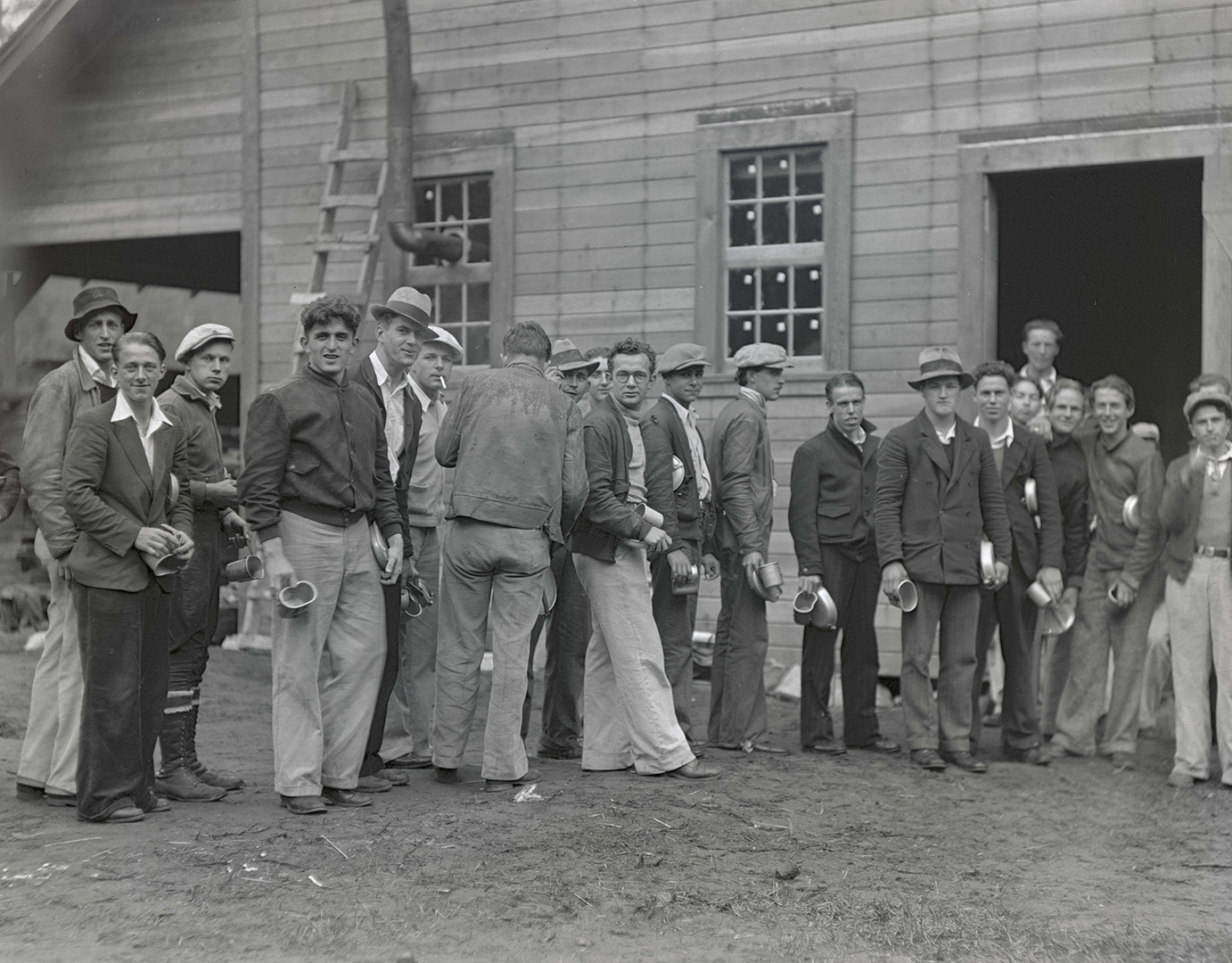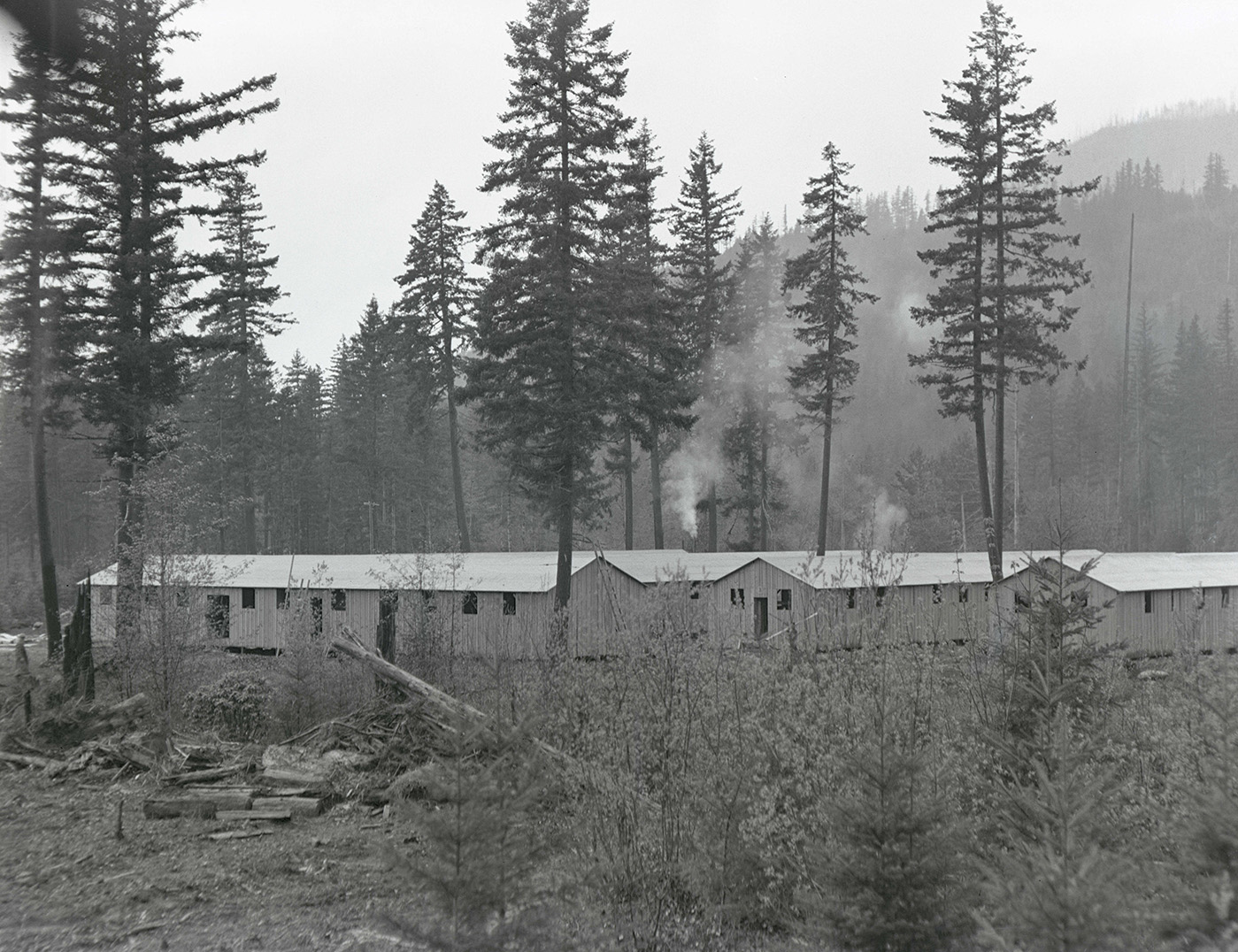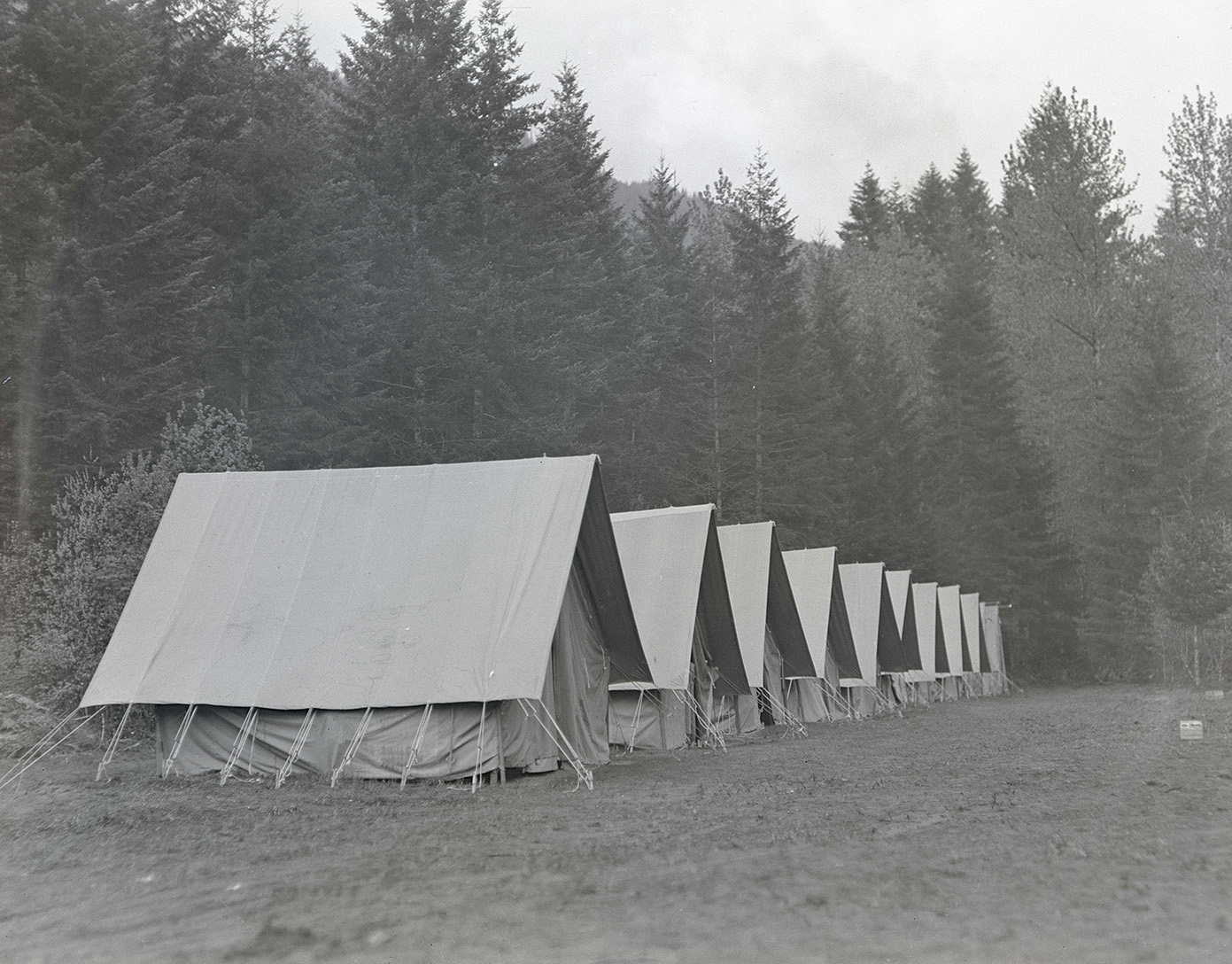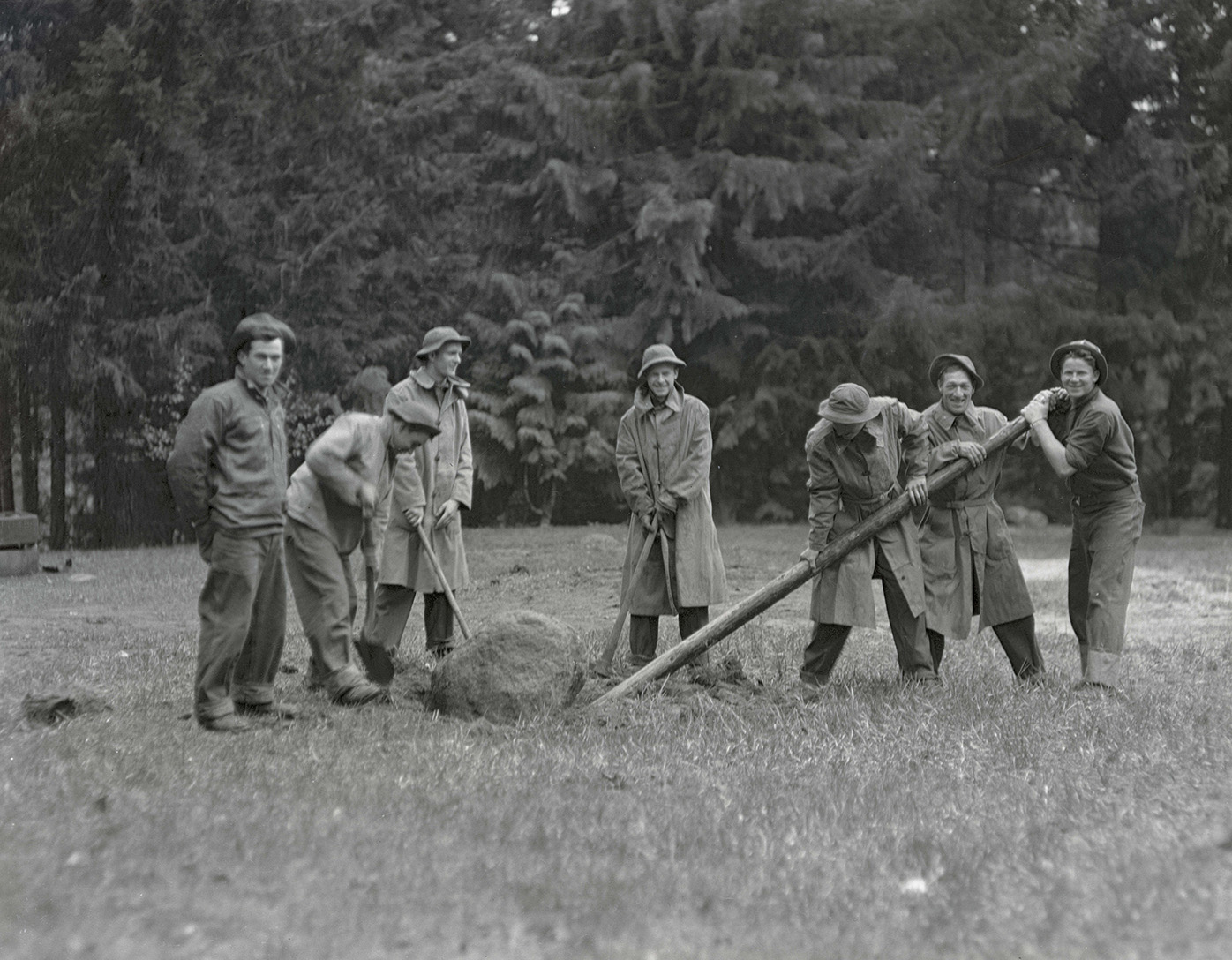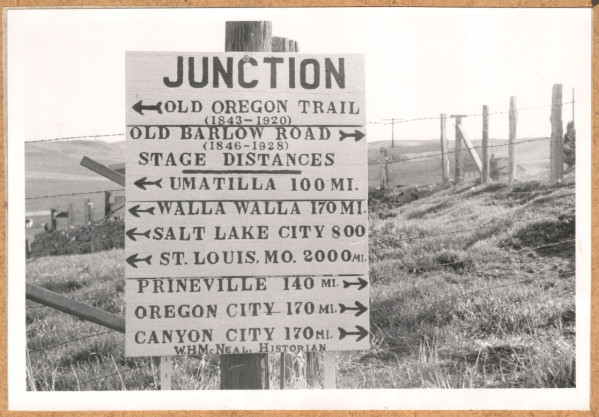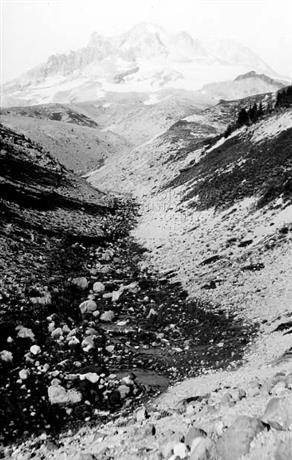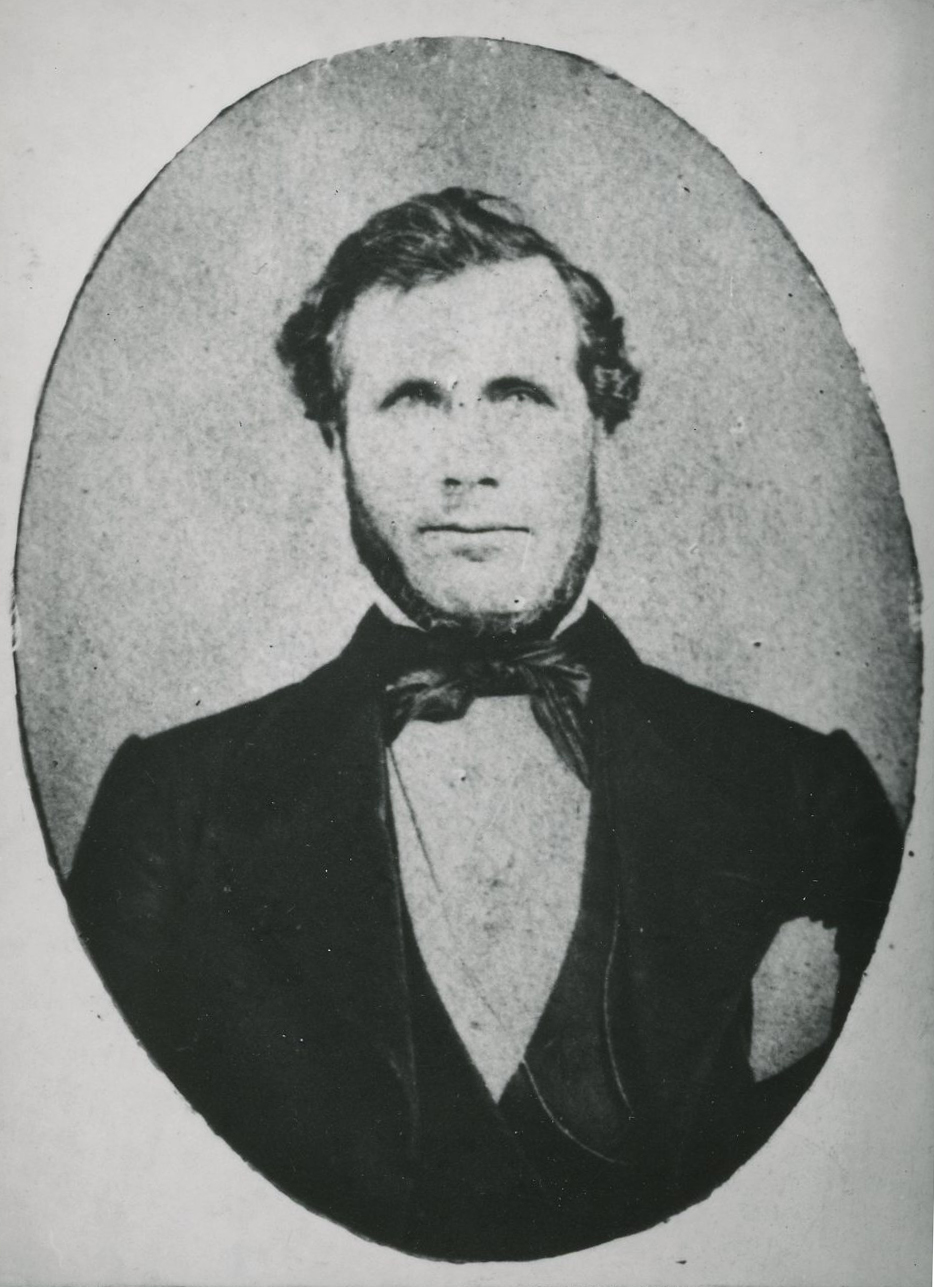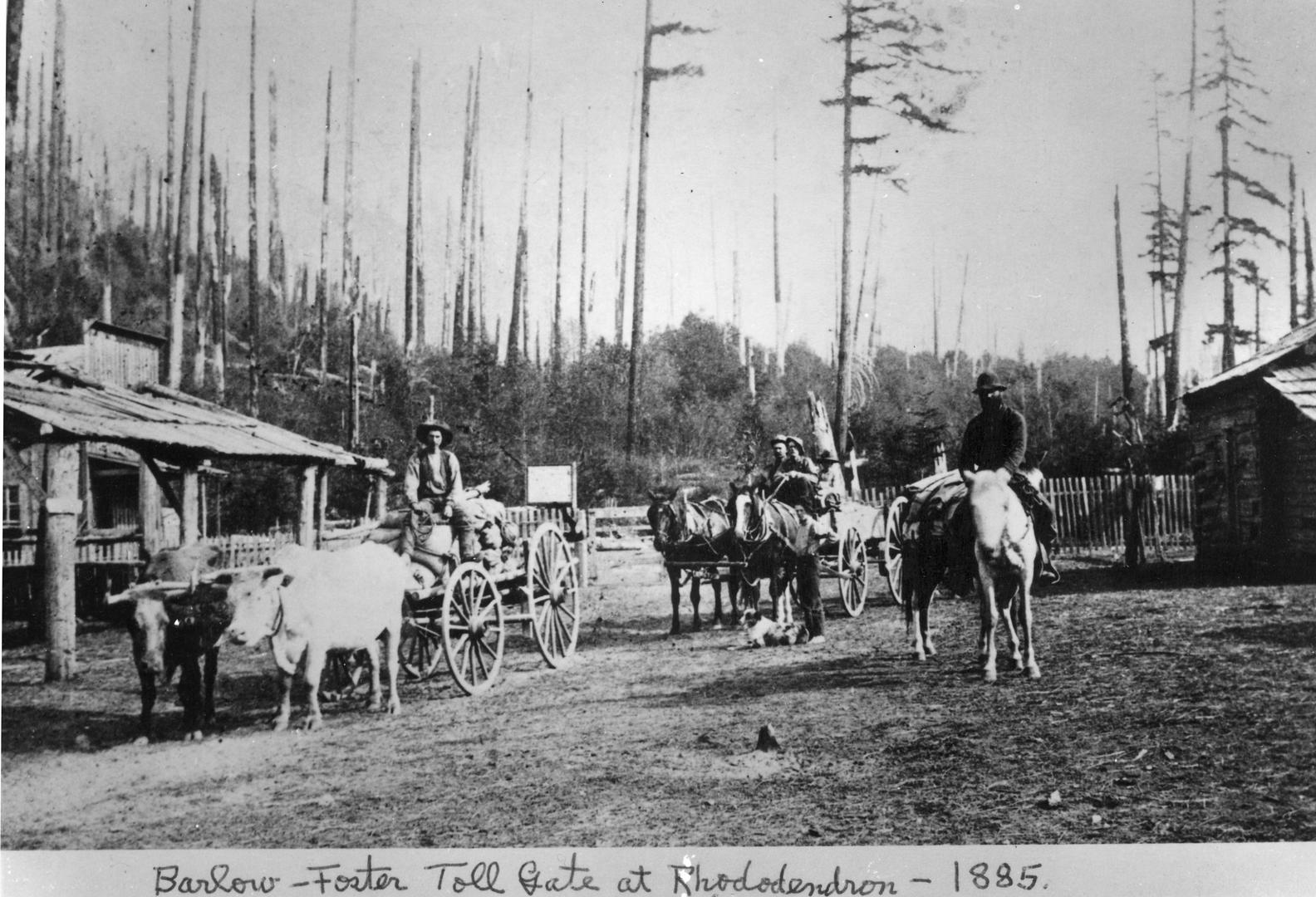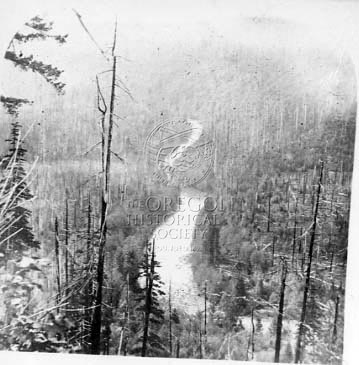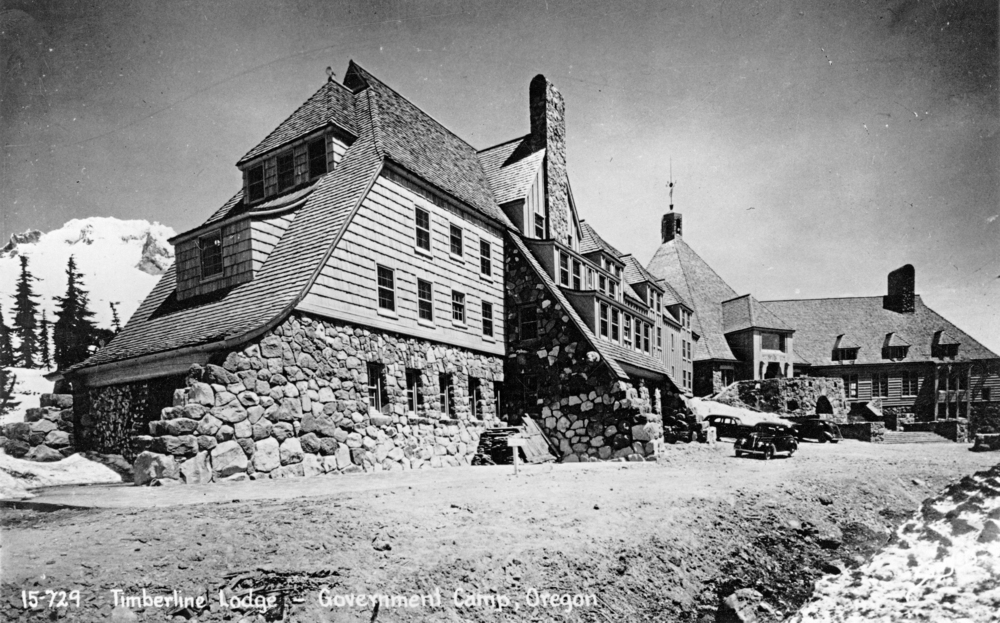Zigzag Ranger Station is the headquarters for the Zigzag District of the Mount Hood National Forest. Built mostly on the south side of Highway 26 (formerly known as the Mount Hood Loop Road), the station is a compound of about twenty-five structures, the oldest of which was built in 1914 as a residence and office for the ranger. The highway partly follows the route of the Barlow Road, a toll road established in 1846 and used by Oregon Trail emigrants.
On Deputy Forest Ranger R.S. Shelley’s recommendation, acting Forest Supervisor R.B. Wilson selected the site in 1907 and named it Zigzag. The name of the nearby Zigzag Canyon and Zigzag River was taken from Joel Palmer's 1845 description of the terrain. The earliest buildings included an outhouse, cowshed, pig shed, chicken coop, and smokehouse, which enabled the station to be self-sufficient.
In 1929, Francis “Scotty” Williamson, a forest recreation assistant, recommended destroying some of the older structures and building new warehouse and storage buildings, bunkhouses, an office and barn, and a service court. A new barn was built, and the site for a new office was prepared in 1932. The next year, Camp Zigzag was established across the road for Civilian Conservation Corps enrollees. Building at the ranger station proceeded rapidly, using plans by recently hired Forest Service architects and the labor of CCC workers. The architects were then assigned the job of drawing the plans for Timberline Lodge, which was built in 1936–1937.
William "Tim" Turner, probably the first of the local Forest Service architects, was the lead Forest Service architect on the Timberline project. The architectural style of buildings at the ranger station is similar to Timberline Lodge and typical of architecture of CCC-built structures, which were characterized by rustic design, the use of local materials (wood and stone), and the incorporation of handmade details.
The grounds of Zigzag Ranger Station contain the Wy'East Rhododendron Gardens, which were started in 1953 by the Wy'East Garden Club. The gardens were intended to establish rhododendron varieties for use in a mountain environment; non-native plants eventually became part of the gardens, as well.
Zigzag Ranger Station was listed on the National Register of Historic Places on April 8, 1986, for its significance in the history of the Forest Service, its role in the recreation history of Oregon, and its association with the Barlow Road.
-
![]()
Zigzag Ranger Station.
Courtesy U.S. Forest Service -
![]()
CCC workers, Zigzag, 1935.
Oregon Historical Society Research Library, 372A0754
-
![]()
CCC buildings at Zigzag, 1933.
Oregon Historical Society Research Library, 371A5969
-
![]()
CCC tents at Toll Gate camp, Rhododendron, 1933.
Oregon Historical Society Research Library, Journal, 371A5972
-
![]()
CCC workers at Zigzag camp, 1933.
Oregon Historical Society Research Library, 372A0763
-
![Barlow Junction]()
-
![]()
Zigzag Canyon.
Oregon Historical Society Research Library, Stout109
-
![]()
Joel Palmer, c.1860.
Courtesy Oregon Hist. Soc. Research Lib., Orhi362
-
![]()
Barlow-Foster toll gate at Rhododendron, Oregon, 1885.
Courtesy Oregon Explorer, Oregon State University. "Barlow-Foster toll gate at Rhododendron, Oregon" Oregon Digital.
Related Entries
-
![Barlow Road]()
Barlow Road
The Barlow Road is a historic wagon road that created a new route on th…
-
![Community of Zigzag]()
Community of Zigzag
On October 11, 1845, Joel Palmer wrote about a ravine on Mount Hood: “T…
-
![Mount Hood]()
Mount Hood
Mount Hood is a stratovolcano in northwest Oregon located about fifty m…
-
![Timberline Lodge]()
Timberline Lodge
Timberline Lodge is the showplace for Works Progress Administration pro…


